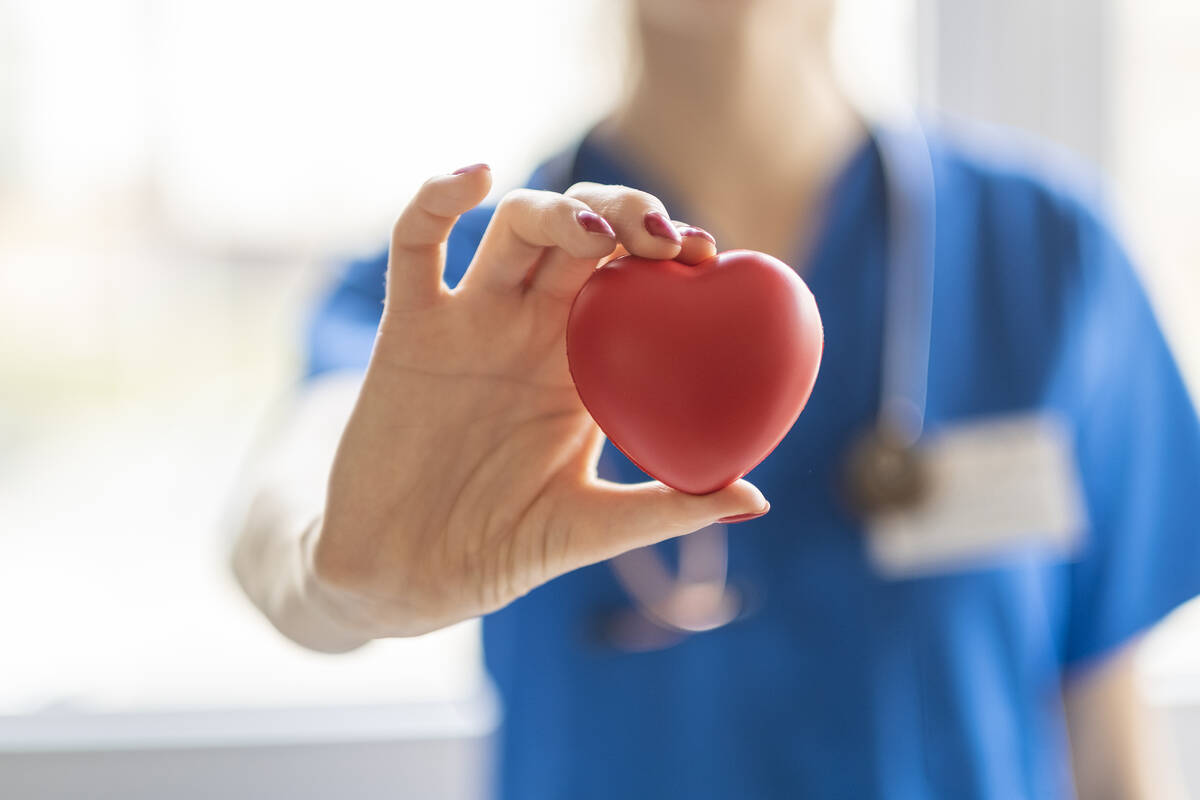Doctors break down 7 common types of heart conditions
Heart disease is the leading cause of death in the United States, with heart conditions affecting more and more people each year. Since numerous cardiovascular problems fall under the umbrella of heart disease, it’s important to know how to distinguish among them.
Here’s a breakdown of different heart conditions, according to doctors.
Hypertrophic cardiomyopathy
Hypertrophic cardiomyopathy is a condition that occurs when the walls of the heart thicken and become stiff.
“This can restrict the amount of blood that fills the heart and increase pressures in the heart,” says Dr. Philip Adamson, medical director at Abbott Laboratories. “The heart muscle changes in this disorder can alter the heart’s electrical system, which increases the chance of sudden lethal heart rhythms.”
Hypertrophic cardiomyopathy is caused by a genetic mutation, and it can occur at any age. It is typically managed by medications and by several kinds of devices, including an implantable cardioverter defibrillator, Adamson adds.
Heart failure
Heart failure is a progressive syndrome that occurs when the heart muscle doesn’t pump blood as well as it should because it is weakened or restricted in its ability to fill.
“Treatment depends on the type of heart failure and what caused it. Medications and lifestyle changes are a typical part of treatment plans,” Adamson explains. “Surgery or procedures to implant cardiac devices such as ICDs, cardiac resynchronization therapy or implantable blood pressure monitoring systems. When the weakened heart pump gets worse, implanted assist pumps, left ventricular assist devices (LVADs) or a heart transplant maybe the best options for some people. Increasingly, remote sensor technology is also improving patient outcomes by alerting worsening heart failure before a patient gets too sick.”
Peripartum cardiomyopathy
Peripartum cardiomyopathy is a type of heart failure that develops during or after pregnancy. “In patients with PPCM, the heart chambers enlarge and the muscle weakens, which means it cannot pump blood properly,” Adamson says. “Many women recover normal heart function or stabilize on medications. In some instances, patients may need a heart assist pump or heart transplant.”
Coronary artery disease
Coronary artery disease develops when arteries that carry blood to the heart muscle become blocked from buildup of cholesterol and other compounds that restrict or interrupt blood flow.
This can occur suddenly with complete blockage of the supply of oxygen and nutrients to the heart muscle. An ischemic event, or heart attack, can be the first sign of CAD, Adamson says. Procedures that use small tubes to reach the heart arteries and unblock them (percutaneous coronary intervention, or PCI) are a common method to open blocked coronary arteries (revascularization) along with the placement of a stent to keep coronaries open and blood flowing.
Valvular heart disease
As the name suggests, this heart condition involves damaged and poorly functioning heart valves.
“The heart has four heart valves that direct flow through the pump to make sure circulation to the lungs and body is maintained. Sometimes the valves are damaged and become leaky or have a hard time opening to let blood out,” Adamson says. “For many years, repairing heart valves always required open heart surgery, but now many valve problems can be treated with devices implanted through blood vessel access.”
Ventricular arrhythmias
The heart has its own electrical system, which provides the normal pulse rate of 60 to 100 beats per minute at rest. The body can increase the pulse quickly during exercise or when we are startled. Sometimes the electrical system of the major heart pumps, called “ventricles,” can short-circuit, making the muscle move chaotically, Adamson says. This electrical problem can make the pump so unorganized that no blood circulation occurs, which is a true medical emergency. CPR and electrical therapies can save lives in this situation if applied quickly.
Atrial fibrillation
Also known as AFib, atrial fibrillation is an abnormal heart rhythm, or arrhythmia, in which the heart doesn’t beat in a steady or regular pattern. It is the most common type of heart rhythm disorder.
“In AFib, the heart’s upper chambers (the atria) fibrillate, or “quiver,” which causes a rapid, irregular heart rhythm,” says Dr. Nikhil Warrier, cardiac electrophysiologist at MemorialCare Heart &Vascular Institute at Orange Coast Medical Center in Fountain Valley, California.
The most common symptom related to AFib is fatigue. Patients also complain of palpitations or rapid/irregular heartbeat. Shortness of breath can manifest with rapid heart rates or congestive heart failure, which could also be related to AFib. Weakness, dizziness and light-headedness can be associated with both rapid and slow heart rates in AFib, Warrier says.
AFib is associated with an increased risk of stroke as it is a well-recognized cause of ischemic stroke. Fortunately, the risk of stroke in the presence of AF can be markedly reduced by up to 70 percent with anticoagulation, Warrier adds. Given the often paroxysmal and asymptomatic nature of atrial fibrillation, it may not be detected with the use of traditional monitoring techniques and may require prolonged rhythm monitoring.




















